Jedi apparel was the clothing worn by Jedi of the Jedi Order. The most traditional example were the monk-like garments and robes known simply as Jedi robes. Although they were free to choose their clothing from the time they became Padawans, most Jedi adopted the garments traditionally associated with the Order, with notable exceptions like Aayla Secura and Ahsoka Tano. Jedi apparel varied in color, but were predominantly tan or brown. During the final years of the Galactic Republic, the Jedi Masters were unsettled by the dark Jedi robes worn by Anakin Skywalker.
Armor was used to complement traditional Jedi robes in times of war; the Clone Wars saw the development of the Jedi Commander armor, a combination of Jedi garments and modified clone trooper armor. Jedi robes were still worn by some surviving members of the Order after the Great Jedi Purge of Order 66. With the end of the Galactic Empire's reign, Luke Skywalker trained a new generation of Jedi apprentices who wore Jedi robes. After the destruction of his temple, Skywalker kept a set of traditional robes that he intended to wear for his final ritual as a Jedi.
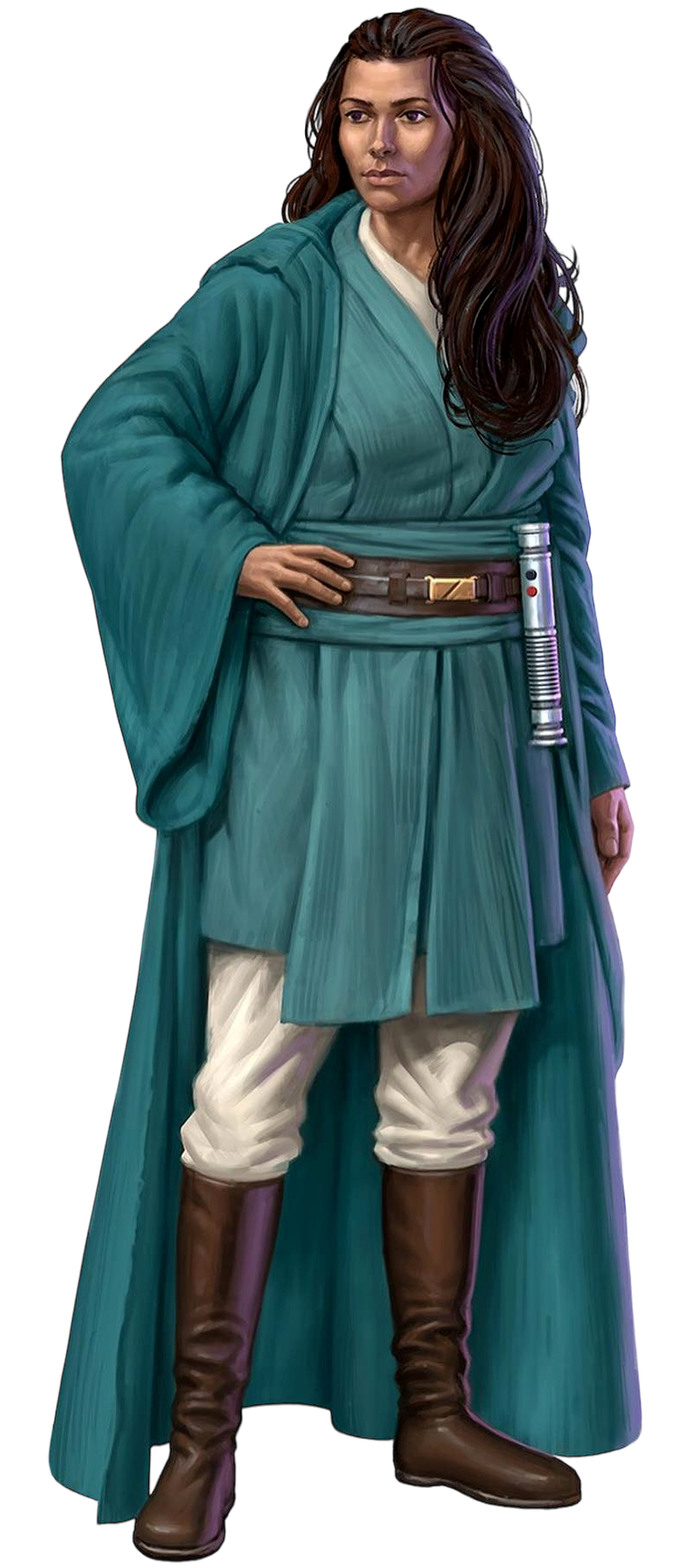
Jedi robes could withstand difficult weather conditions, including rain and sandstorms.
Jedi tradition emphasized the worship of the Force and complete devotion to its ways. As such, members of the Jedi Order were less invested in their appearance and therefore typically clothed in plain robes. Although the Jedi had no set uniforms, Jedi apparel tended to follow a pattern, consisting of an undertunic, an overtunic, a cloak with wide sleeves and a deep hood that provided the wearer with anonymity, loose-fitting trousers, a tabard, a broad sash tied around the waist with a belt, and tall boots. Those pieces of clothing and footwear generally varied in light earth tones, such as tan and brown, though several Jedi were known for wearing darker versions. In the eyes of some, like the Kalleran scoundrel Janus Kasmir, Jedi robes made their wearers look similar to monks.
Having adopted a simple yet strict life style, most Jedi chose to wear robes in a traditional earth-tone. The clothes were warm and comfortable, and despite their constrictive appearance, they allowed for greater freedom of movement. In addition to not hindering the Jedi's range of motion, the robes created a "swirling" effect that served to distract an opponent in combat. Aside from their combat use, Jedi robes provided protection in severe weather conditions, making them particularly useful on Kamino or desert-covered planets. The Jedi Order also permitted members to wear robes from their homeworld, such as Barriss Offee's hybrid Mirialan-Padawan outfit or the elegant garments worn by the high-born Dooku of House Serenno.
Traditional Jedi robes were worn by both Grand Master Yoda and Jedi Master Luke Skywalker. Yoda utilized his cloak's hood for the purpose of disguise, and Skywalker reserved his traditional garments for his final rite as a Jedi.
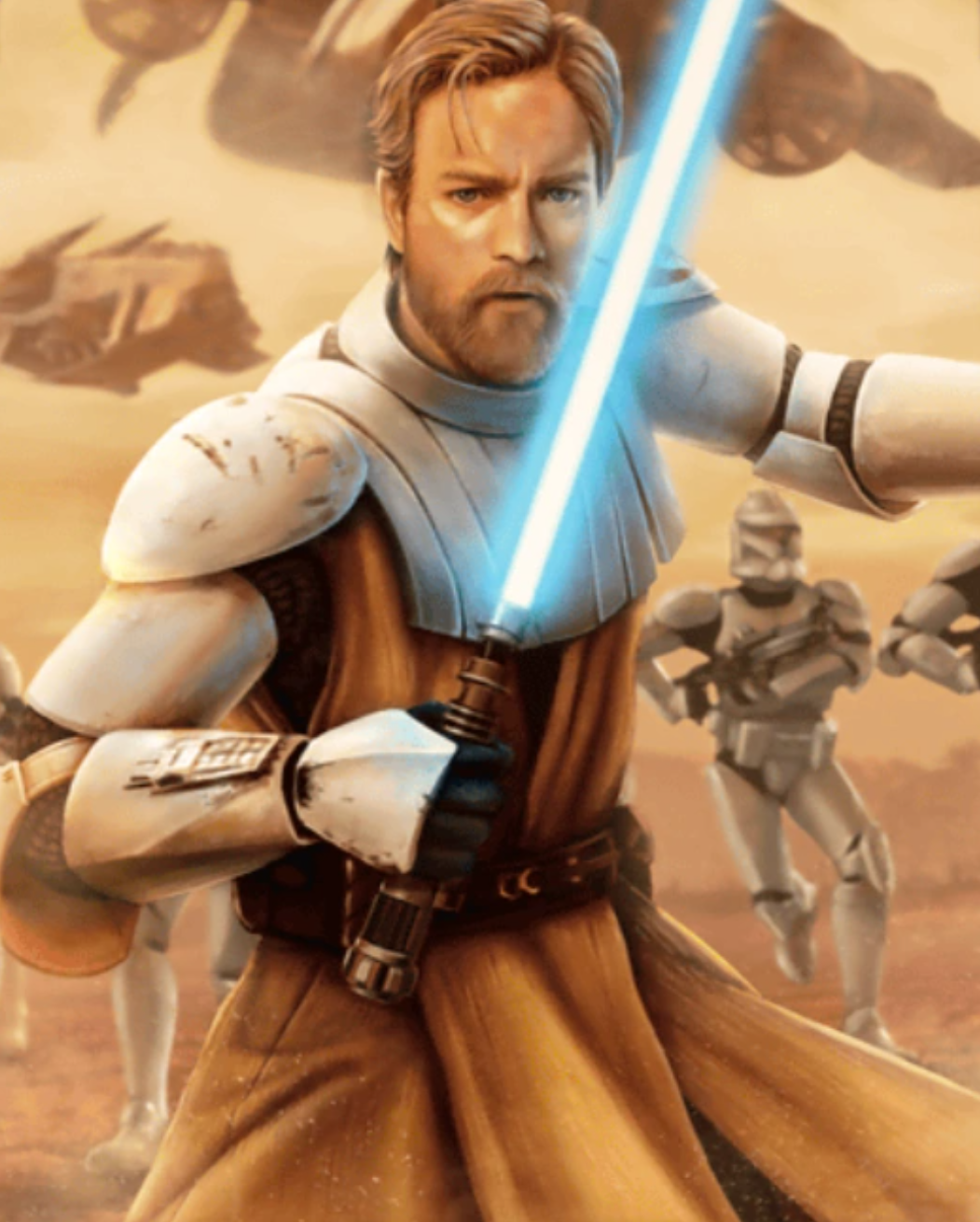
In wartime some Jedi wore armor plates over their traditional robes.
Jedi Commander armor was a type of personal body armor worn by some members of the Jedi Order in wartime. Developed at 5,000 credits and given out to Jedi after the Jedi Military Integration Act was passed, Jedi Commander armor was a modified version of the clone trooper armor. It was developed during the Clone Wars and utilized by the Jedi Generals of the Grand Army of the Republic, who fought alongside the clone troopers on numerous battlefronts across the galaxy. Notwithstanding the Force powers and lightsaber combat skills of the Jedi, they were vulnerable to blaster fire and as such wore armor over their ceremonial robes during the conflict against the Separatist Droid Army, which was composed of billions of battle droids.
Another type of armor used by the Jedi was the Jedi Reconnaissance Armor. Costing 4,000 credits, it was created during the Clone Wars to assuage the clone troopers' fears for the safety of their generals. The Jedi therefore utilized a type of lightweight armor that offered some defense against blasters but without hindering their range of motion.
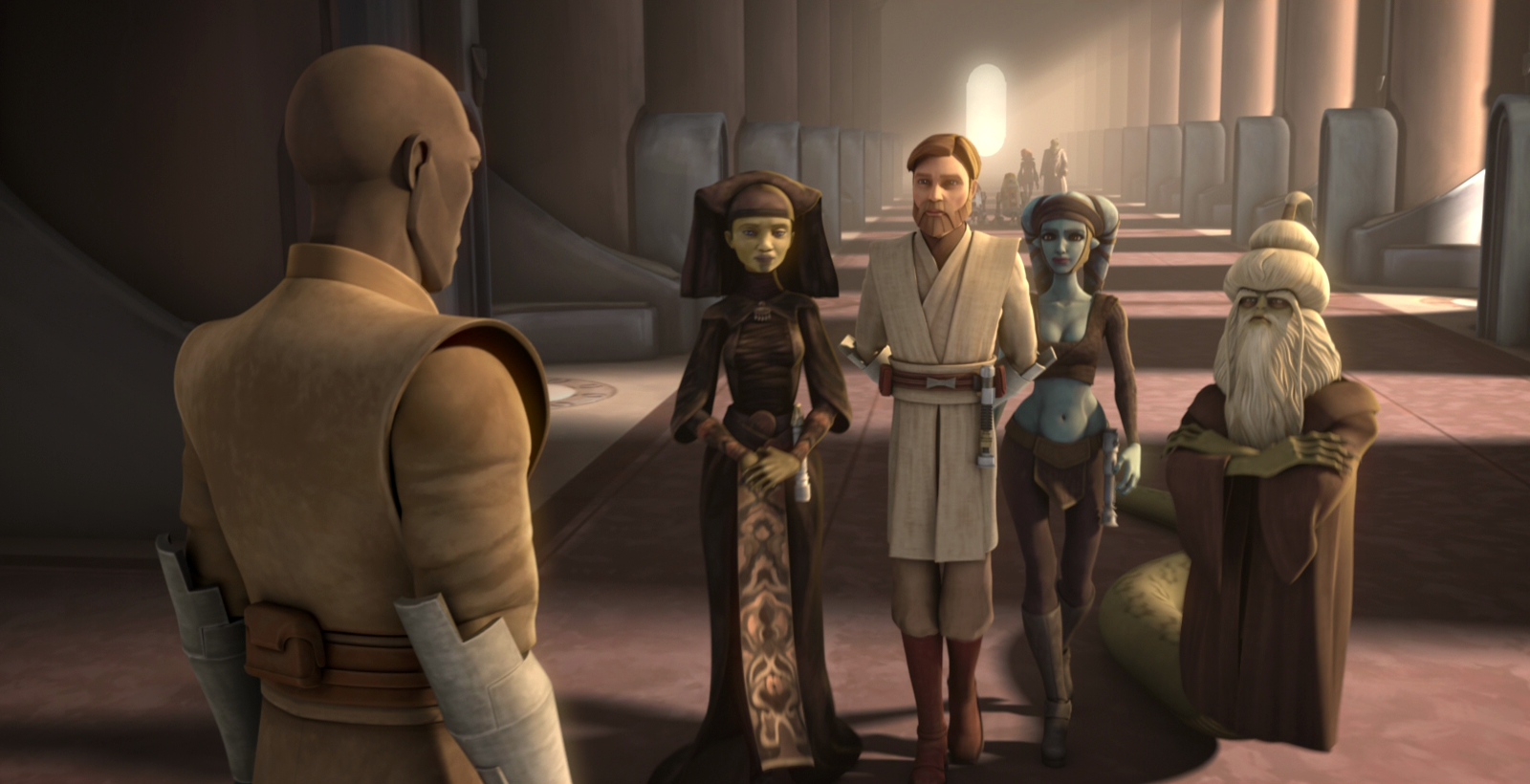
In the Jedi Order attire varied according to the individual's preference.
The Jedi Order did not enforce a uniform dress code; as such, the Jedi could wear the attire of their choice after they achieved the status of Padawan, with even some Padawans adopting clothing that did not match the typical apparel of the Order. During the High Republic Era, two Jedi, Barash Silvain and Porter Engle, developed a bond akin to that of siblings. Despite working closely together as they traveled throughout the galaxy, they adopted contrasting clothing in line with their opposing attitudes; Engle wore a set of dark robes, although some of his central robes and his sleeves were lighter, while Silvain adopted radiantly white apparel. Much of her outer robes and her hood were tan. After Silvain stepped away from active Jedi duty in what would become known as the Barash Vow, Engle reported his sister's actions to the Jedi High Council while wearing a set of cream-colored robes.
During the High Republic Era, Jedi wore brown robes with a golden trim identified as mission robes. They also had access to white and gold colored garments known as Temple robes. A fine ceremonial clothing, Temple robes saw use at formal events like the dedication of the Starlight Beacon. Kufa of the Ro family mocked the golden robes as overly showy, dismissing the Jedi as people who did not understand the Force as per her warped understanding of the Force passed down from the Path of the Open Hand cult.
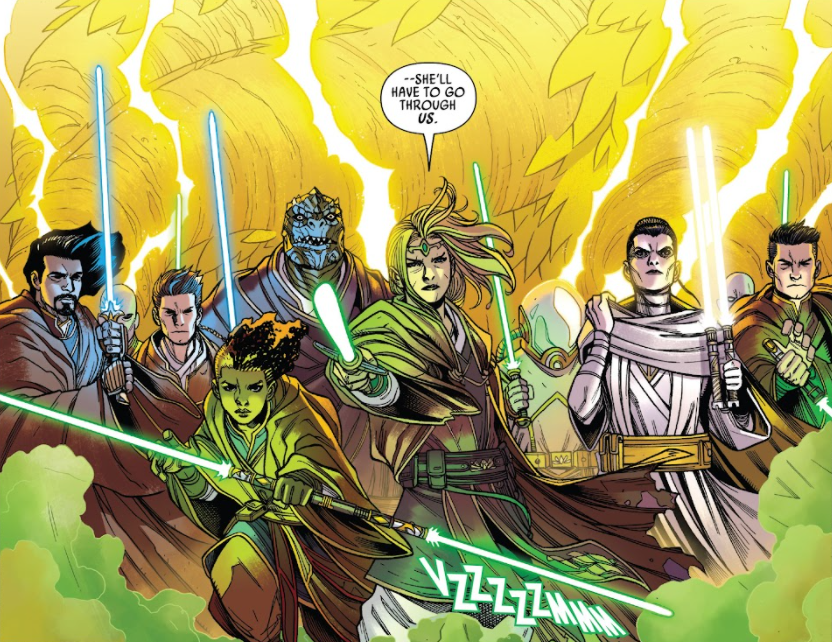
Jedi of the High Republic in their mission attire robes, with Orla Jareni standing out in her white attire.
During the High Republic Era, one Jedi Wayseeker—a position amongst the Order in which a Jedi would operate outside the confines of the Jedi High Council's orders—was Orla Jareni, who wore a set of white robes at all times, which meant she stood out amongst brown-robed Jedi during missions where she found herself with others. Jedi Padawan Reath Silas found her entire look, in part due to her outfit and general Umbaran appearance, to be as individual as her decisions, with her blank robes appearing so clean that her also white skin seemingly had more color. Back during her days as a Padawan, she had worn a set of white robes during the Eiram–E'ronoh crisis, a mission during which her then-fellow Padawan Cohmac Vitus also wore white robes. As a Jedi Master, Vitus wore the brown robes with a golden trim more commonly seen as era's mission attire.
Another Jedi in special attire was OrbaLin, who, as a blob-based Ugor, wore an enviroment suit with a dome-like top to maintain a humanoid appearance. His suit was white and gold in color as if it was a set of Temple robes. As the Jedi Order carried on during the Republic Era, the tan and brown robes saw use by the Order, but the golden trim seen during the High Republic vanished. Whereas Jedi like Grand Master Yoda made use of traditional Jedi robes, the Twi'lek Aayla Secura wore fitted clothes that allowed complete freedom of movement and left her midriff exposed. Another Twi'lek Jedi, Finn Ertay, wore a long-sleeved, high-necked full-length dress that began to flare below the waist.
At some point during the conflict between the Nihil marauders and Jedi-backed Republic, a battle erupted on Gallimere, thanks to which a human citizen found a fallen lightsaber. Deciding that the people of Gallimere needed a hero, the human impersonated a Jedi by donning robes and wielding the lightsaber against the Nihil, but found they had underestimated the Nihils' numbers. Sometime after the establishment of the Nihil marauders' Occlusion Zone with the stormwall as its border, which Gallimere sat outside of but bordered upon, Jedi Master Keeve Trennis arrived on Gallimere after hearing rumors of a lone Jedi waging a campaign against the Nihil. Discovering another Nihil raid on Gallimere, Trennis discovered the robe-wearing and lightsaber-wielding human, who confessed they were not a Jedi but wanted to give the local people hope. The individual helped Trennis defeat the Nihil force and was assured by the Jedi Master that all they needed to serve the light side of the Force was hope.
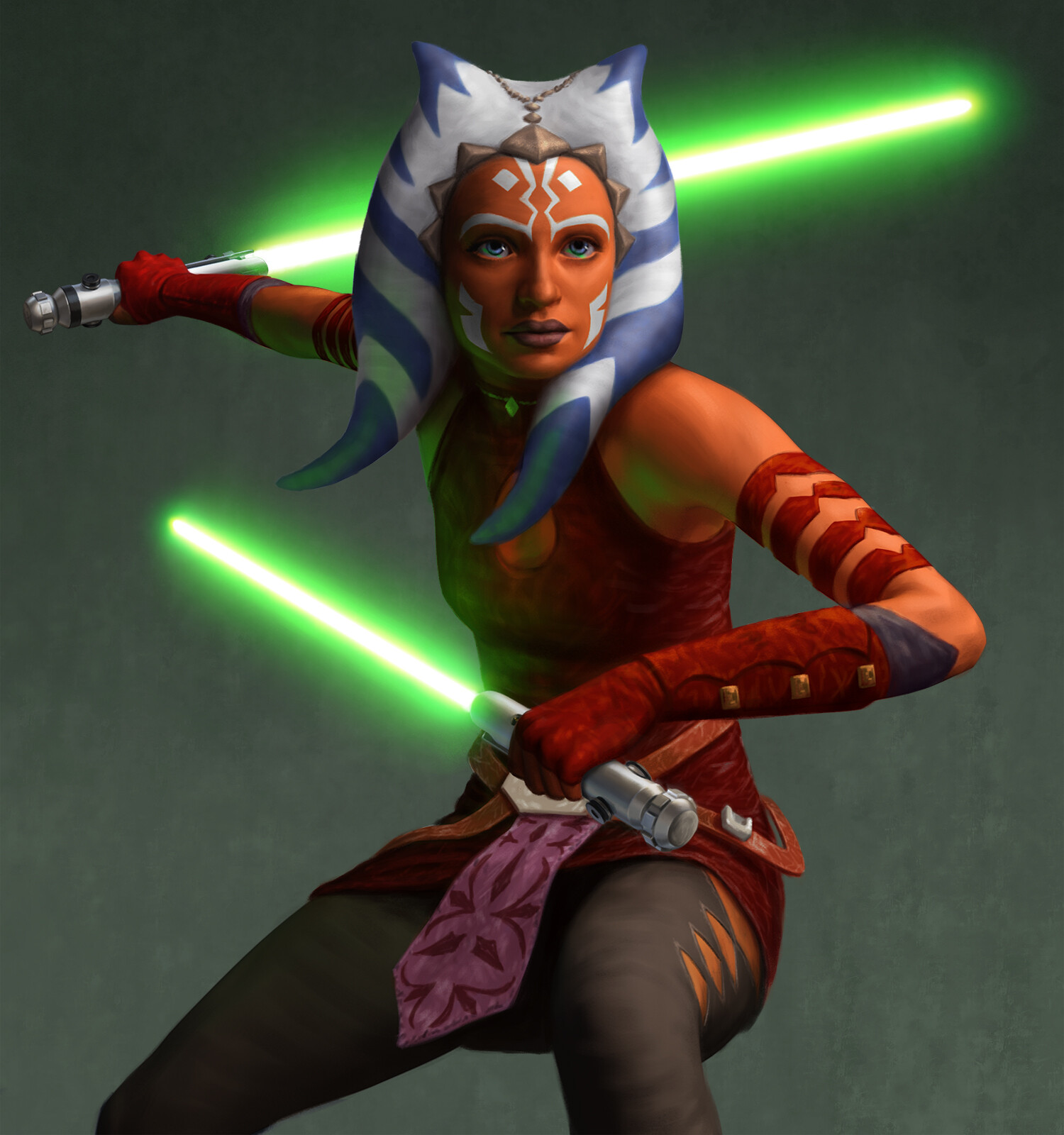
Ahsoka Tano in her later adopted outfit
The Togruta Ahsoka Tano dressed in a bandeau top and skirt during her early years as a Padawan, but she also owned a set of clothing that covered much more of her body, all without compromising her freedom of movement. Indeed, she eventually fully adopted an outfit which covered more of her skin while still allowing great freedom of movement.
The Kiffar Quinlan Vos favored sleeveless tunics, and occasionally donned a black leather outfit. Being a hair-covered Wookiee, the Padawan Gungi wore nothing but a sash, a belt, and a bandolier. However, other Wookiee Jedi—such as Burryaga Agaburry, who had both mission and Temple attire like other High Republic Era-Jedi, and Arkoff—had worn the Order's apparel. Kel Dor Jedi, such as Master Plo Koon, wore goggles and an antiox breath mask to keep themselves safe when off of their species homeworld of Dorin.
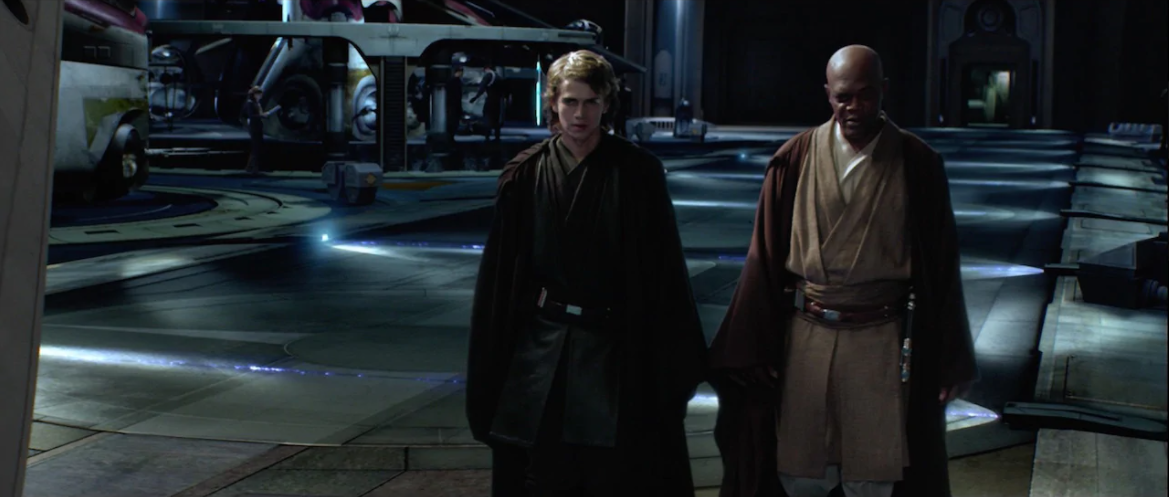
Anakin Skywalker wore darker robes than the other members of the Jedi Order.
The older members of the Jedi Order were concerned about Anakin Skywalker's decision to wear dark Jedi robes. During the Clone Wars, the Chiss commander Mitth'raw'nuruodo noted the practical applications of the Jedi robes worn by Skywalker. As a Jedi General, Skywalker wore a red and blue fitted tunic with dark armor plates attached to it. His former Master, Obi-Wan Kenobi, likewise wore protective armor during his time as a general, its design derived from that of the clone troopers who served in his 212th Attack Battalion.
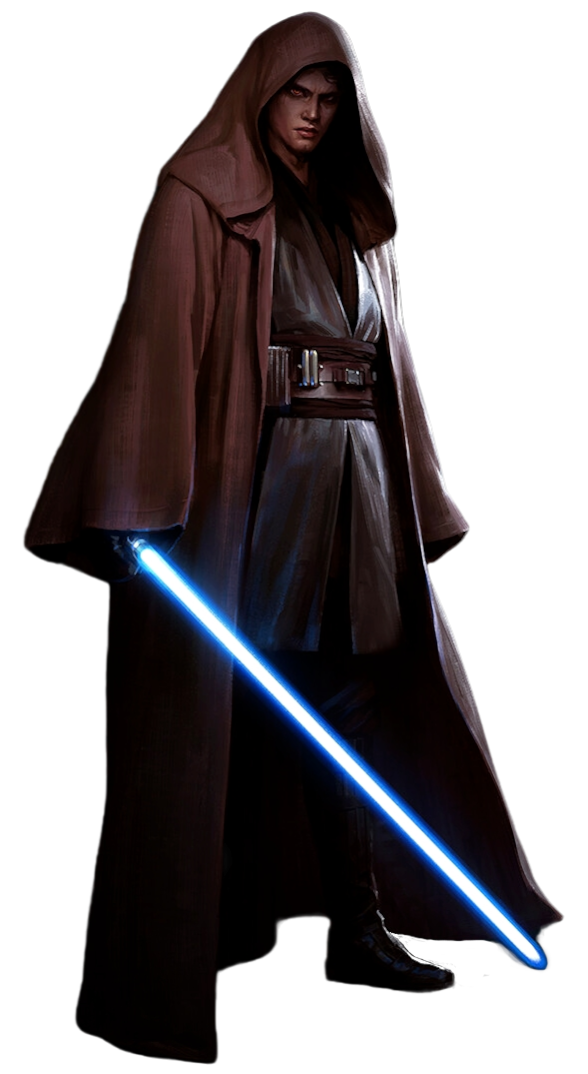
Darth Vader prior to his reconstruction retained the Jedi robes that he wore as Anakin Skywalker.
By the end of the Clone Wars, the Dark Lord of the Sith Darth Sidious had succeeded in converting Anakin Skywalker to the dark side of the Force. They hurriedly moved to restore Sith rule to the galaxy by destroying the Jedi Order. As a result, the newly-anointed Sith apprentice Darth Vader retained the dark robes that he wore as a Jedi Knight. During the siege of the Jedi Temple, Vader discovered a group of Jedi Initiates hiding in the Jedi Council Chamber. Still dressed in his Jedi garments, he was mistook for a Jedi by one of the younglings, who believed that Skywalker had come to help them.
Vader continued to wear Jedi robes during his mission to volcanic world of Mustafar, where he executed the leadership of the Confederacy of Independent Systems on behalf of his Sith Master. However, his duel with Obi-Wan Kenobi across the magma-covered plains of Mustafar led to Vader's immolation in which his Jedi attire was burned and consequently replaced by a black suit of armor.
With the Galactic Republic supplanted by the Galactic Empire, the surviving Jedi scattered into exile to escape the Great Jedi Purge. While some Jedi such as Yoda, Kenobi, and Ferren Barr continued to wear Jedi robes during the Imperial Era, Cal Kestis and Caleb Dume had adopted non-Jedi attire—in Kestis' case, the work clothes of the Scrapper Guild on Bracca—while hiding as fugitives under Order 66.
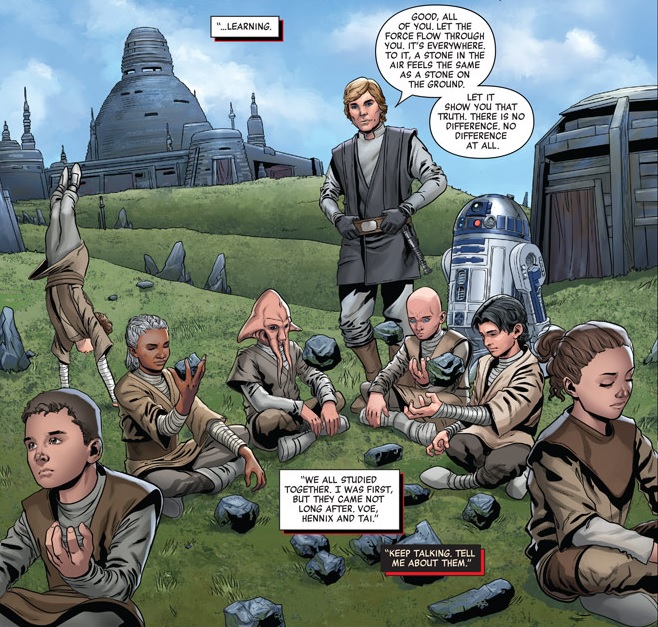
Luke Skywalker and his apprentices wore the distinctive clothes of the Jedi Order.
Anakin Skywalker's son, Luke Skywalker, became the last Jedi after the death of his mentor Yoda. Taking the title of Jedi Master, he trained multiple apprentices at once, including his nephew Ben Solo. The members of the new generation of Jedi were clothed in Jedi garments since the early days of their apprenticeship, as was Skywalker who wore woven Jedi robes which included a traditional Jedi belt buckle.
In the wake of the destruction of Luke Skywalker's Jedi temple, Solo sought to join the Knights of Ren. Due to Ren's disapproval of Solo's Jedi attire, the former Padawan replaced his tattered robes with darker garments that were reminiscent of the Knights' battle gear.
Skywalker fled to the Jedi Order's ancestral homeworld of Ahch-To, where he stored various Jedi relics as well as a set of traditional Jedi robes that he only intended to wear for the completion of his last rite as a Jedi. Disillusioned by the Order's past defeats and his nephew's transformation into Kylo Ren, Skywalker wore his traditional robes when he attempted to burn a uneti tree that functioned as a repository for the last traces of the Jedi religion.
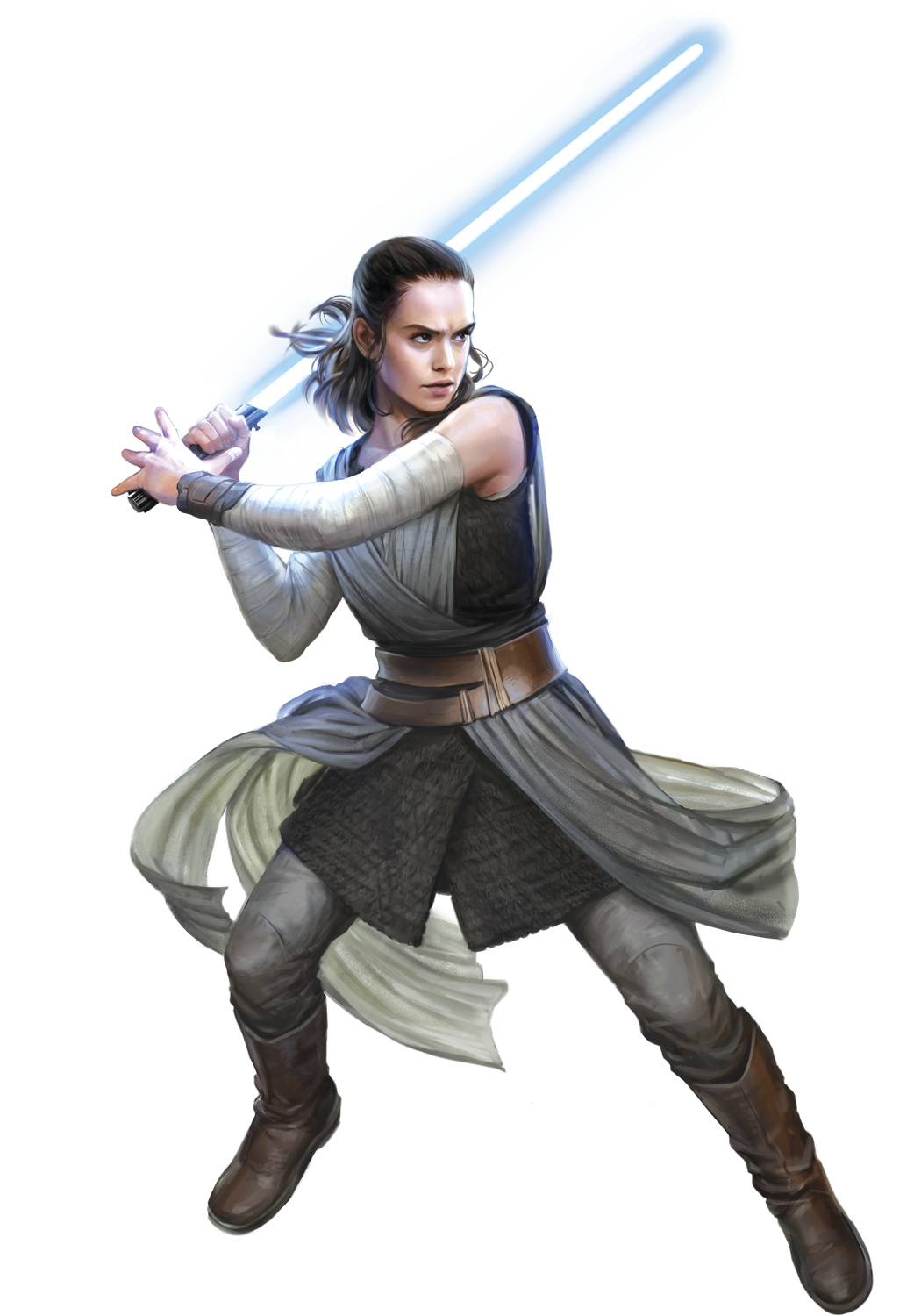
Rey wore a set of Jedi training robes following her apprenticeship on Ahch-To.
In the aftermath of the Battle of Starkiller Base, Luke Skywalker was discovered hiding on Ahch-To by Rey, a scavenger from the planet Jakku. Skywalker was wearing his traditional Jedi robes at the time of his first encounter with Rey, whose outfit included "a loose openweave tabard in Jedi tradition." At the end of her time on Ahch-To, Rey changed her clothes to a set of Jedi training garments before confronting Kylo Ren in person onboard the Supremacy. As with her previous attire, the training outfit was influenced by Jedi tradition, featuring "a loose open weave tabard."
By the time of the Battle of Crait, Skywalker had abandoned his plans to end the Jedi Order. Although he physically remained on Ahch-To, he was able to manifest a projection himself on Crait, transmitting his presence across the galaxy through the Force. The appearance of Skywalker clad in Jedi robes surprised his twin sister, General Leia Organa, whose Resistance he intended to save from the First Order and its new ruler, Supreme Leader Kylo Ren.
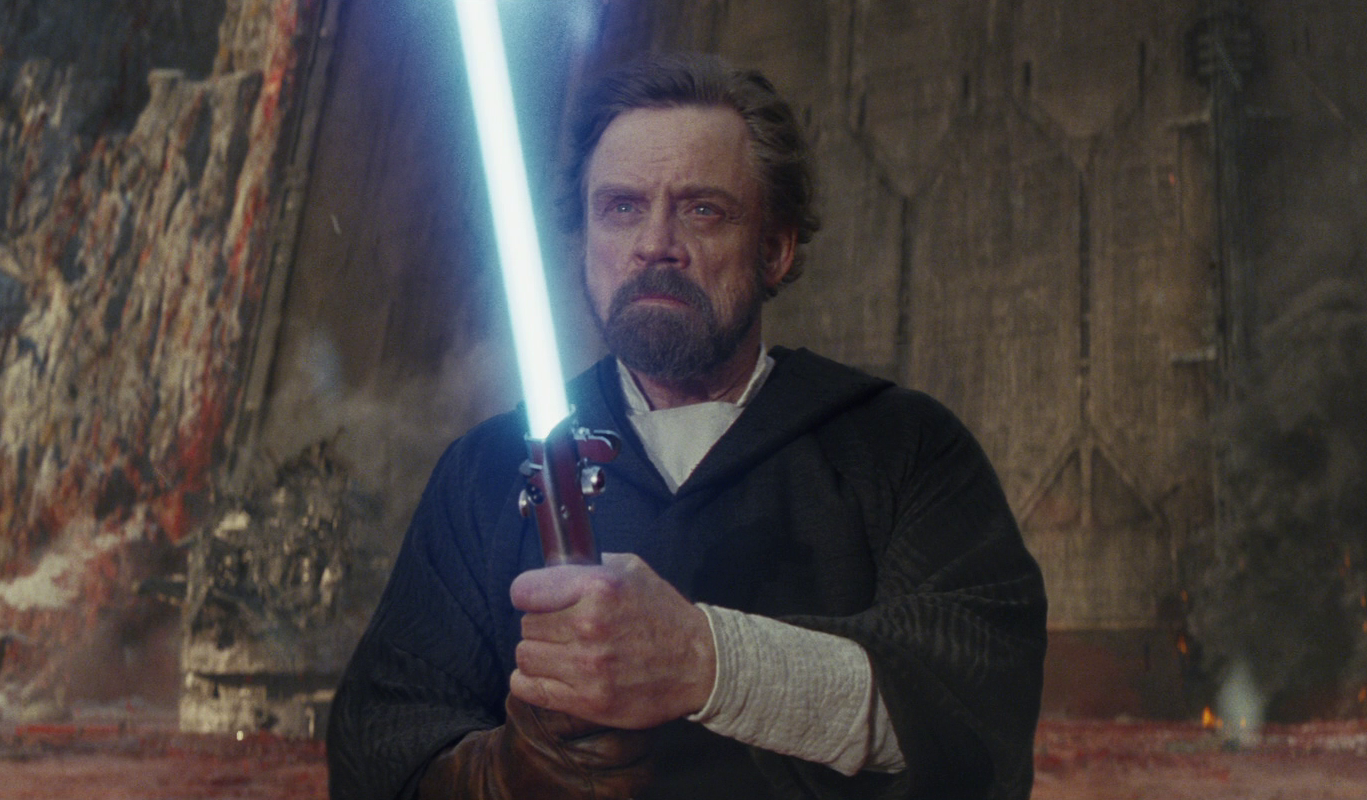
An illusion of Luke Skywalker clad in Jedi robes appeared on Crait during a battle between the First Order and the Resistance.
Skywalker's illusion reflected a younger version of himself, wearing the same Jedi robes that he had during his time as Ben Solo's Jedi Master. The sight of his former master triggered Ren's rage, preventing him from discerning the inconsistencies in Skywalker's appearance. Ren consequently failed to destroy the remnants of the Resistance as he originally intended, but the effort of projecting himself across space and time led to Skywalker's death. As a result, his body vanished along with his Jedi garments, leaving only the outer robe after he became one with the Force.
Rey, having committed to learning the Jedi arts, took to wearing white garments that were patterned on the clothes that she wore during her time as a scavenger. In addition to honoring her origins on Jakku, Rey's chosen attire included a lightweight synthetic capelet that reflected the Alderaanian heritage of her mentor, Princess Leia Organa of Alderaan. She also utilized trousers with padded knees while engaging in the athletic exercises of her Jedi training on the planet Ajan Kloss.
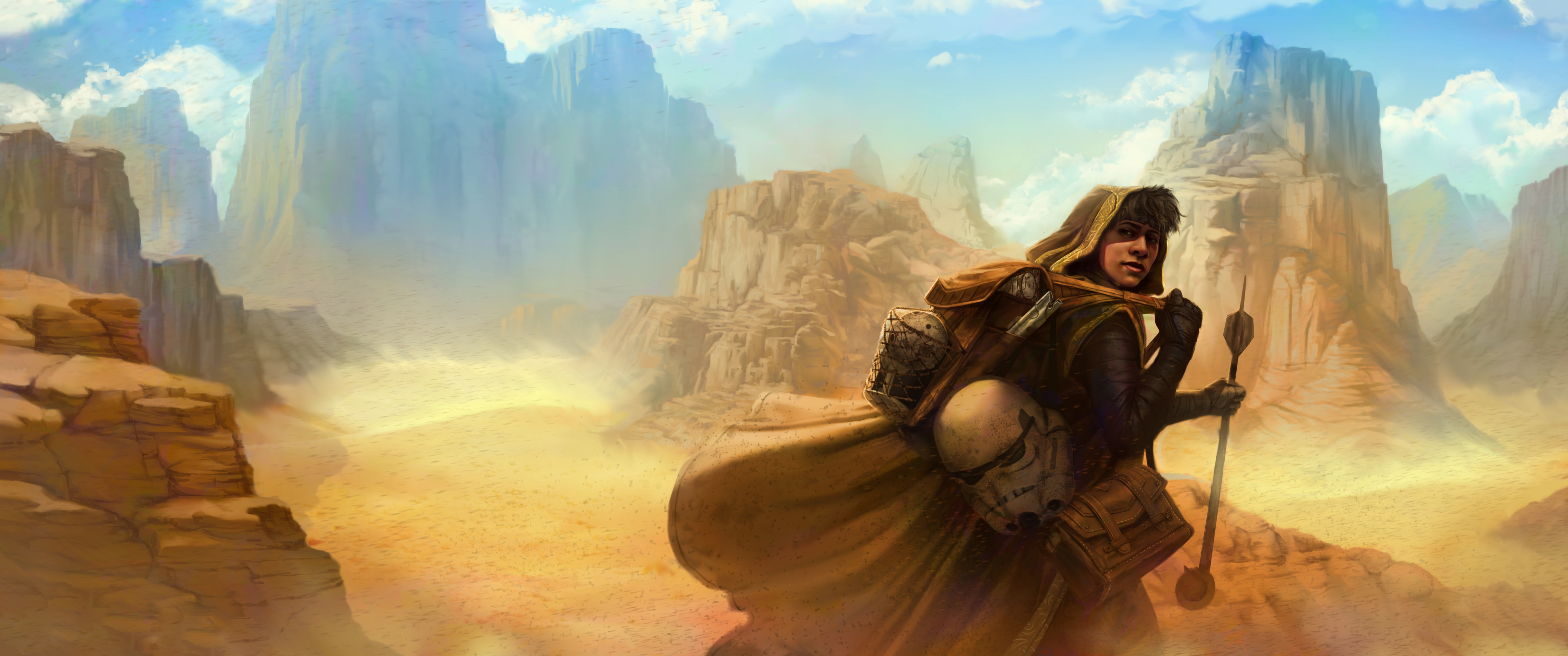
Karr Nuq Sin's inheritance included a set of Jedi robes that belonged to his great-grandfather, the former Jedi Naq Med.
During the New Republic Era, Karr Nuq Sin inherited the Jedi robes of his great-grandfather, Padawan Naq Med, who left the Jedi Order before the time of the Clone Wars. Inspired by his Jedi heritage, Nuq Sin endeavored to rediscover the lost history and relics of the Jedi Order.
After the Order's collapse, the Jedi were mythologized and deified as the subject of legends. These stories created a romanticized impression of the Jedi Knights garbed in brown robes and armed with "laser swords." Rose Tico, a technician who served in the Resistance, referred to the Padawan braid as a "little rat tail" after Finn informed her about Rey's search for Skywalker.
Jedi garments first appeared in Star Wars: Episode IV A New Hope, though they were not revealed to be the general wear of the Jedi until Star Wars: Episode I The Phantom Menace.
- Star Wars: Jedi Temple Challenge — "Episode 1"
- Star Wars: Jedi Temple Challenge — "Episode 2"
- Star Wars: Jedi Temple Challenge — "Episode 3"
- Star Wars: Jedi Temple Challenge — "Episode 4"
- Star Wars: Jedi Temple Challenge — "Episode 5"
- Star Wars: Jedi Temple Challenge — "Episode 6"
- Star Wars: Jedi Temple Challenge — "Episode 7"
- Star Wars: Jedi Temple Challenge — "Episode 8"
- Star Wars: Jedi Temple Challenge — "Episode 9"
- Star Wars: Jedi Temple Challenge — "Episode 10"
- The LEGO Star Wars Holiday Special
- LEGO Star Wars: The Skywalker Saga
- Star Wars: Visions — "Journey to the Dark Head"
- Fortnite
- The Art of Star Wars: Visions